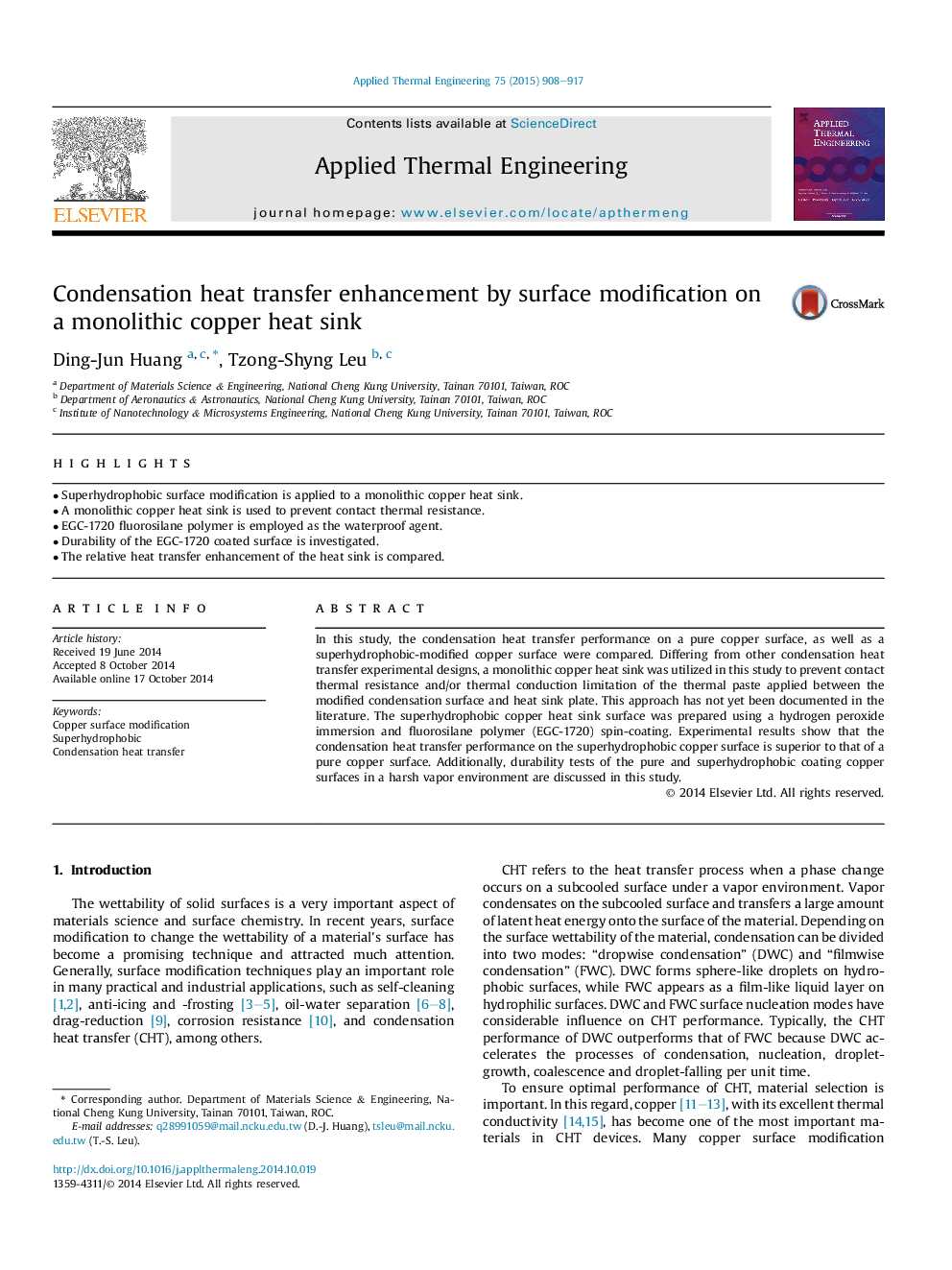| Article ID | Journal | Published Year | Pages | File Type |
|---|---|---|---|---|
| 645970 | Applied Thermal Engineering | 2015 | 10 Pages |
•Superhydrophobic surface modification is applied to a monolithic copper heat sink.•A monolithic copper heat sink is used to prevent contact thermal resistance.•EGC-1720 fluorosilane polymer is employed as the waterproof agent.•Durability of the EGC-1720 coated surface is investigated.•The relative heat transfer enhancement of the heat sink is compared.
In this study, the condensation heat transfer performance on a pure copper surface, as well as a superhydrophobic-modified copper surface were compared. Differing from other condensation heat transfer experimental designs, a monolithic copper heat sink was utilized in this study to prevent contact thermal resistance and/or thermal conduction limitation of the thermal paste applied between the modified condensation surface and heat sink plate. This approach has not yet been documented in the literature. The superhydrophobic copper heat sink surface was prepared using a hydrogen peroxide immersion and fluorosilane polymer (EGC-1720) spin-coating. Experimental results show that the condensation heat transfer performance on the superhydrophobic copper surface is superior to that of a pure copper surface. Additionally, durability tests of the pure and superhydrophobic coating copper surfaces in a harsh vapor environment are discussed in this study.
